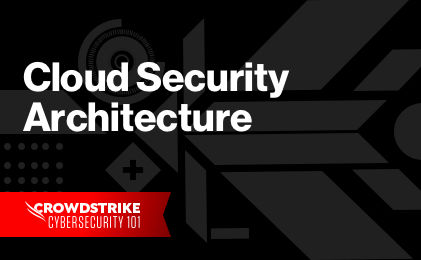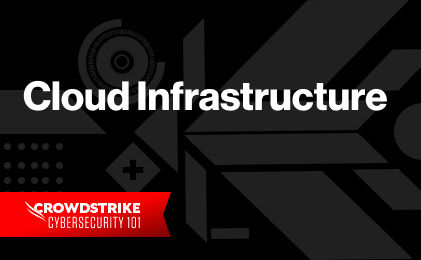What is Platform as a Service (PaaS)
Platform as a Service (PaaS) is a cloud computing model in which a third-party cloud provider maintains an environment for customers on a pay-as-you-go basis to build, develop, run and manage their own applications.
In a PaaS model, the vendor typically provides all infrastructure, including hardware and software, needed by developers. Because it is accessed through the internet,the customer can circumvent costly IT infrastructure investments, as well as the need to purchase software licenses and development tools.
Common Examples of PaaS
- SAP Cloud as an open business platform that integrates cloud and on-premise apps
- Salesforce Lightning as a component-based framework meant for app development
- Microsoft Azure as a cloud computing environment that supports the entire web app development lifecycle
- AWS Lambda as a part of Amazon Cloud that supports the effective management of AWS resources
- Google App Engine as a scalable serverless platform that provides highly capable servers that can withstand large volumes of queries
PaaS vs IaaS and SaaS
Before reviewing the PaaS model in detail, it may be helpful to provide an overview of the other two main “as-a-service” cloud computing options:
- Infrastructure as a service (IaaS): The provider manages the infrastructure for the customer, including servers, data storage and network equipment. The customer maintains responsibility for all other aspects of operations, including installation, configuration and management of software, apps, middleware and the operating system.
- Software as a Service (SaaS): The provider completely manages an application for the customer. The application is hosted in a cloud computing environment that can be accessed by the subscriber. The application does not need to be installed on a device; rather, it is accessed via the internet or an application programming interface (API).
Technically speaking, the key difference between PaaS and IaaS is that PaaS vendors provide and maintain the software, hardware, and tools used on the platform while in an IaaS model, these components are the responsibility of the customer.
Another critical distinction is related to how the PaaS or IaaS solution is used. The PaaS environment is used almost exclusively for software and application development. It is essentially an interface for developers to access software and development tools in a remote setting.
7 Types of PaaS
1. Public PaaS
A public PaaS solution allows developers to build, run, manage and deploy applications from a platform hosted in the public cloud. Generally speaking, a public PaaS environment is often the most affordable PaaS service option in that customers need not manage or maintain any aspect of the cloud infrastructure or development stack, such as the operating system, servers or databases. This allows developers to focus exclusively on application development. On the other hand, a public PaaS solution lacks the privacy and security that some organizations need.
2. Private PaaS
Private PaaS solutions offer customers the opportunity to customize their cloud environment and leverage their own hardware, a private data center or other asset according to their business needs or preferences. While the private PaaS model provides customers with more flexibility and enhanced security, it also creates a more complex IT environment. In some cases, customers must buy, manage and maintain infrastructure elements and ensure each component is properly configured within the larger framework. A private PaaS solution is also generally far more expensive than a public option because the cost of the cloud environment is not shared among users.
3. Hybrid PaaS
The hybrid cloud model has become increasingly popular because it provides companies with a way to run and scale workloads in the optimal setting, as well as the flexibility to move workloads between different environments quickly and easily.
Learn More
Read our post highlighting the differences between public and private cloud deployments to understand which one works best for your organization:
4. Artificial Intelligence PaaS (AiPaaS)
A PaaS environment designed exclusively for the building of AI applications.
5. Integration PaaS (iPaaS)
A PaaS solution that is used to integrate applications, as well as organizational data, processes and solutions.
6. Communications PaaS (cPaaS)
A PaaS solution that allows developers to incorporate communications services, including audio and video calls, text-based chat or instant messaging, and social media, within the application development process.
7. Mobile PaaS (mPaaS)
A low-code PaaS environment exclusively for mobile app development.
How does PaaS work?
The PaaS environment consists of four main components:
- A graphical user interface (GUI) through which development tools are delivered
- A cloud infrastructure made up of storage, operating systems and virtual machines
- Product development software, including codes, debuggers and compilers
- Middleware that connects the user interface with the cloud
Because the PaaS solution provides developers with remote access to the development stack through the GUI, they can access and work on the platform from virtually anywhere in the world. Middleware enables development teams to work directly within the platform to build, test and launch applications. This work can be done simultaneously or asynchronously.
How Is PaaS Used By the DevOps Team and Organization?
Most commonly, the PaaS environment is used to provide a framework for developers to build and customize cloud-based applications. This model provides many inherent advantages to the development team, including the ability to:
- Access the system and software from anywhere with an internet connection
- Develop applications without the hassle of maintaining hardware and software in their own facility
- Collaborate with other developers remotely
- Work simultaneously or asynchronously with other team members
- Roll out finished products
Due to pre-coded components and scalability capabilities, the amount of code needed when using a PaaS model is significantly reduced. This allows the organization to shrink the application development timeline and reduce errors by relying on tested and approved code.
Aside from providing a framework for the DevOps team, the PaaS model has several valuable business use cases such as:
- Developing APIs that enable the organization to share data or integrate processes and services between applications, solutions or workflow tools
- Support Internet of Things (IoT) application development and data analysis
- Enable a “shift left” or agile development model
- Simplify the migration or replatforming of legacy applications in the cloud
- Improve business intelligence with PaaS tools that let organizations mine their data and analyze it to make decisions involving forecasts, investment returns, production capacity and scheduling, among other decisions
What Are the Advantages of PaaS?
Organizations that use PaaS can expect to unlock the following benefits:
Workforce enablement
The PaaS environment is accessed via the internet. This means that developers can obtain the tools they need and work collaboratively from different locations around the world. This allows the organization to access a more extensive talent pool and engage their workforce across different time zones and geographies.
Cost savings
Rather than purchasing complete and expensive software packages outright, in the PaaS model, customers or developers pay a subscription fee determined by the resources they need. Similarly, developers can pay for more storage only when they need it. This eliminates unnecessary, wasted capacity during low-traffic periods and allows the organization to scale the environment rapidly to meet unexpected or occasional demand peaks.
Efficiency
PaaS platforms include pre-coded application components, such as security features and search engines. Developers can integrate these components into their applications, rather than coding these components from scratch. This often leads to shorter application or software development timelines, as well as fewer errors.
Access
Most PaaS models include access to a range of sophisticated development software and analytics tools that are supported by a wide range of operating systems, databases and middleware. By leveraging a PaaS model, organizations can avoid the need to purchase expensive software licenses, as well as the need to update and upgrade tools.
Cross-Platform Building
Many third-party vendors provide development options that enable users to deploy products more easily across multiple platforms. For example, most PaaS environments include mPaaS capabilities, which allow developers to optimize a traditional computer app for mobile devices. Special features such as video, phone call and text messaging can also easily be added to applications through cPaaS solutions.
Improved Cybersecurity
Sometimes, different people within the same org have different opinions on which security issues to prioritize. Relying on a PaaS provider means that decisions relating to cybersecurity practices will be centralized and managed in a uniform way since they typically have teams that focus solely on the security aspect of PaaS.
Low Risk Experimenting
PaaS allows developers to experiment with various development tools and operating systems without having to make significant investments in new software, tools or infrastructure.
Improved Time-To-Market
PaaS includes the hardware and software that is needed to build and maintain the development platform. Once the platform is accessed, developers can start building immediately. This allows customers to develop and launch applications more quickly, which improves overall time-to-market, as well as time-to-value.
Learn More
Read our post on shared responsibility model to understand the framework that explains responsibilities of cloud service providers (CSPs) and customers to secure every aspect of the cloud environment:




